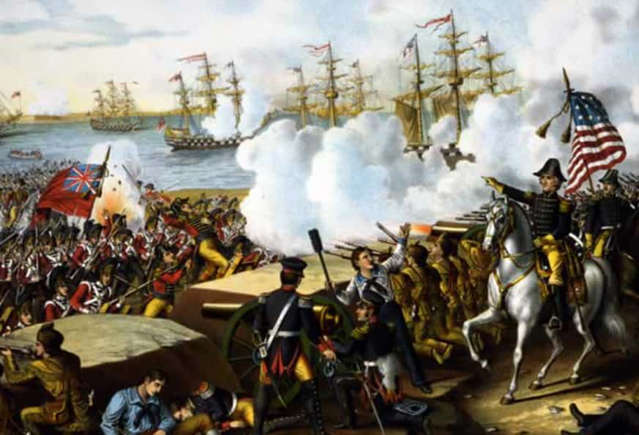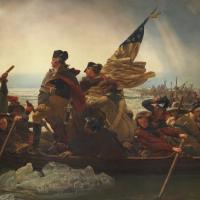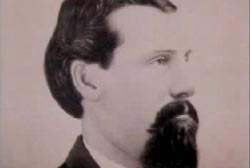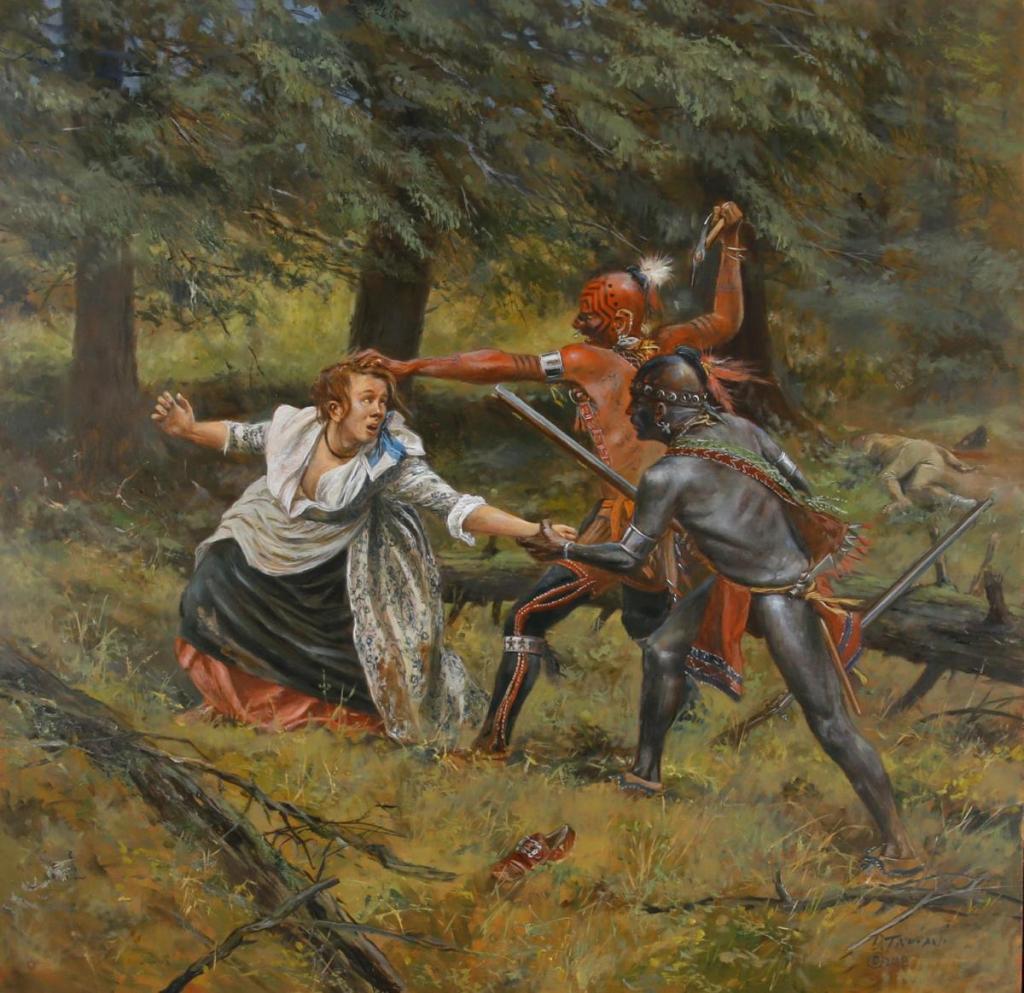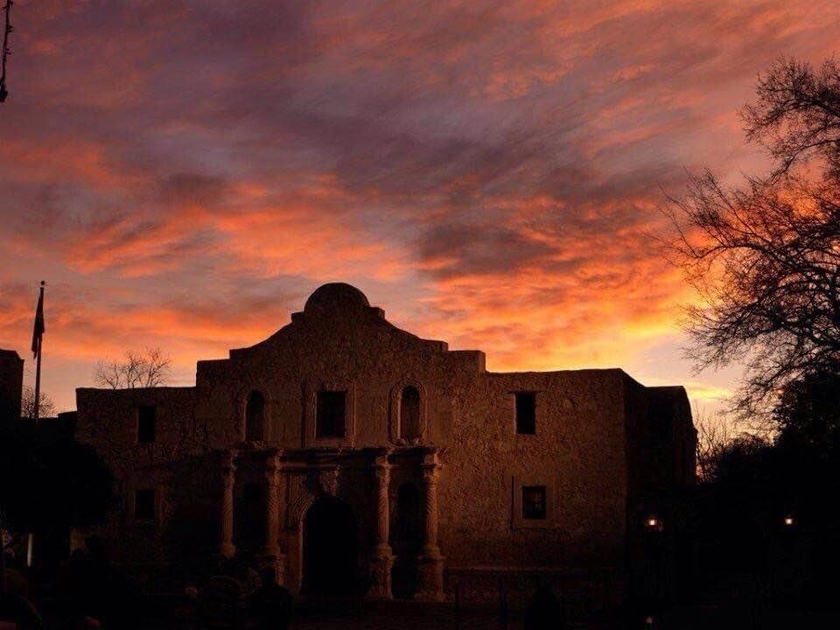Plummer’s Treasure
Did a crooked sheriff hide a treasure of stolen gold near Bannack, Montana?
Sheriff Henry Plummer
CASE DETAILS
... View MorePlummer’s Treasure
Did a crooked sheriff hide a treasure of stolen gold near Bannack, Montana?
Sheriff Henry Plummer
CASE DETAILS
When gold was discovered in Alder Gulch, Montana, in 1863, hundreds of prospectors descended on the boomtown of Bannack. Among them were outlaws, eager to collect their share of the spoils.
In the spring of that year, a group of such outlaws called the Road Agent Gang nearly wiped out the prospectors. It’s been said they stole more than a thousand pounds of gold in nuggets, coins, and gold dust.
Henry Plummer, the town sheriff, was an ex-convict and secret leader of the gang. According to author and historian Dick Pace, Plummer had been released just four years earlier from a brand new California prison called San Quentin:
“Henry Plummer was a very pleasant-looking individual. He was the only man in Bannack, practically, who always tipped his hat to a lady when he saw her on the street. Well, you could call him the consummate conman of his day, so he was able to con people into thinking he was a competent man to be the sheriff. And, of course, he knew that being a sheriff would give him a perfect cover.”
Plummer and his gang targeted miners trying to transport their gold to a major railhead.
It’s estimated that in four months, Henry Plummer and the Road Agents killed more than 120 miners and stole what today would be $6 million in gold.
Finally, in December of 1863, the gang went too far. A well-liked young man was cruelly murdered by the Road Agent Gang. One of the local ranchers found the body and brought it into town. Dick Pace said it was the final straw:
“They formed a posse and during the next six weeks the vigilantes were picking people up, giving them a trial. And we know they hanged about 22 men, at least.”
When the outlaws were caught, they started pointing fingers. One Road Agent about to be hanged identified Henry Plummer as the gang’s leader. The vigilante posse raced to Plummer’s house.
Only seven months after the Road Agents had begun their reign of terror, Henry Plummer marched to a scaffold he himself had built in his role as sheriff. But before he was hanged, he made an unusual request; if given two hours on a horse, he would return with his weight in gold. The vigilantes had already heard enough. Henry Plummer hanged without telling anyone where his treasure was buried.
Immediately after his death, prospectors started searching for Plummer’s booty. According to local historian Jim Edwards, two mysterious gold hunters may have found it in the early 1900s:
“They went into the local store that had a vault and asked if they could leave this box in there all night. And one of the men stayed there riding shotgun on the vault. The next morning, they disappeared. Nobody knew who they were or where they went or what they dug up.”
Even if one box of Plummer’s gold was found, there’s probably a lot more out there. Two local men have been hunting for the treasure for years. Bill Jappe said he and his partner are confident that Plummer’s gold still lies buried somewhere in the area:
“Nobody would bury their eggs in one basket. He was the sheriff of both counties at the same time, so it’s understandable that he has someplace where he has access to it. I bet there’s a thousand pounds or better in different places, maybe from Virginia City to Bannack.”
Perhaps the location of Plummer’s buried gold will never be found – if it was ever there in the first place.
- Share link
- Report

Like

Love

HaHa

Yay

Wow

Hate


Be the first person to like this.

Like

Love

HaHa

Yay

Wow

Hate
Be the first person like this
A brief history of the haunted house in Western cinema and literature
A door creaks shut, unexpectedly; a footstep is heard on the stairs; a face is seen at the window. The haunted house is a staple ... View MoreA brief history of the haunted house in Western cinema and literature
A door creaks shut, unexpectedly; a footstep is heard on the stairs; a face is seen at the window. The haunted house is a staple of Gothic writing, television, and film, but what is it about this humble setting that holds such a fascination?
For many, it is the sense of the unheimlich or the uncanny – the homely and the strange brought into contact. The home, we would like to think, should be a place of safety, of sanctuary from the world and domestic harmony. When this space is made strange, made unfamiliar somehow, terror ensues.
A ghost is there to tell a story – often of an event or past grievance that ties that story to a place or person, where the past breaks in to disrupt the present and this sense of home. Sources as old as Pliny the Younger, the ancient Roman lawyer and writer, tell stories of houses that are haunted.
Ghostly portrait of a man leaning on a red chair
Gothic writing of the 18th century in Britain began with the castle as a house. Castles were dual spaces, both domestic home and political center, and in these spaces, like the one at the center of Horace Walpole’s The Castle of Otranto (1764), ghosts represented family feuds, the restoration of inheritance, and moral retribution.
Later, in the 19th century, the taste in Gothic moved closer to the everyday. The questions of truth and narrative reliability became significant, with Victorian novels set in more regular homesteads.
During the Victorian age, the ghost story gained popularity through short stories in the periodical press. Charles Dickens went so far as to create a collaborative series of ghost stories in the Christmas edition of his magazine All the Year Round, all set in different rooms of the same haunted house. Contributors included Elizabeth Gaskell and Wilkie Collins.
One great story in your inbox every afternoon
Haunted houses frequently play on the tension between inside and outside. Ghosts, such as the mysterious children in M. R. James’s Lost Hearts (1895), come from within the house, arising from traumatic events that took place there. The ghosts seen by the governess at Bly Manor, in Henry James’s classic The Turn of the Screw (1898), are intrusive figures, seen first from a distance then encroaching more and more on the domestic space, as the governess attempts to shield her young charges from their influence. Anxieties about the home as private space and as protection are rife in these stories.
Trailer for the 2009 adaptation of The Turn of the Screw.
The haunted house, however, is also associated with confinement, often reflecting the entrapment of women, particularly within the domestic space. Emma Liggins, gothic scholar at Manchester Metropolitan University, suggests in her book The Haunted House in Women’s Ghost Stories that the ghost story “transforms domestic space into a place of terror that threatens marital relations and women’s lives and sanity”.
The move into the 20th century did nothing to exorcise these ghosts. If anything, they became more pervasive as modern life and historical buildings clashed.
The birth of modernism and the onset of cinema in Western culture saw new opportunities in writing and visual media for the representation of the haunted house, and a whole series, like The Amityville Horror (1797 then 1977), uses the house as a framework.
Visual media allows for further play with the sense of the inside and outside, and the questions of narrative truth explored in earlier fiction. The BBC’s famous paranormal drama Ghostwatch (1992), brought its viewers into a supposed televised household haunting, blurring fact and fiction to draw in the audience. Presented as “documentary”, the show faked interruption itself by supernatural forces as the ghost, Pipes, appeared to interfere with camera equipment, fooling – and terrifying – many a TV viewer.
In some cases of haunting, ghosts are not the only threat; the house itself may be the supernatural force at work. Shirley Jackson’s Hill House, from her 1959 novel The Haunting of Hill House is famed less for those ghosts who dwell within it as for its own ghostly malevolence: “the face of Hill House seemed awake, with a watchfulness from the blank windows and a touch of glee in the eyebrow of a cornice”.
The house may also, of course, be a metaphor for the mind, a popular idea in Freudian readings of the Gothic, which consider texts in relation to the unconscious. Here, the uncanniness of the haunted house may reflect precisely the way in which we are strangers to ourselves, with secret rooms, passages, and the ghosts within forming a neat analogy for the mysterious and unknowable nature of the human mind.
In the end, houses in fiction and film may be cleansed of their ghosts, and frequently are, yet this is not always the case. Haunted houses such as Walpole’s Otranto and Edgar Allan Poe’s House of Usher (from The Fall of the House of Usher, 1839), dispossessed of their ghosts, fall in and collapse. But at the close of Shirley Jackson’s story, Hill House still “stood against its hills”, having (spoiler alert!) taken the life of the protagonist, Eleanor.
For the most part, buildings outlast the human, and the haunted house reminds us of this, that something we may think we possess – our very own “home”, or our mind – has an existence before and beyond us.
The Late Massacre near Fort Hall
Brigham City, Sept 12, 1859
Editor Deseret News--SIR:-
This morning Milton J. Harrington, wife and child, of Buchanan Co., Iowa, arrived here, survivors of the comp... View MoreThe Late Massacre near Fort Hall
Brigham City, Sept 12, 1859
Editor Deseret News--SIR:-
This morning Milton J. Harrington, wife and child, of Buchanan Co., Iowa, arrived here, survivors of the company of emigrants lately massacred by the Indians about the 2nd inst., 25 miles west of Fort Hall between Portneuf Bridge and the Snake River.
Mr. Harrington makes the following statement in relation to the murderous affair: “Our company numbered 19 persons, 6 men, 3 women, and 10 children between 1 and 10 years old. Some of the company was from Michigan, and the others from Buchanan County, Iowa. At the last crossing of the Sweet Water, we were advised to travel on Lander’s Cuttoff, being told that that route was nearer, better fed, and safe from Indian depredations.
Our journey was prosperous until the night of the 2nd, when we were selecting our place for camping and were making our campfires. We were startled at the report of a gun, followed immediately by a number of others. We soon ascertained that our rear wagons, which had not yet arrived in camp, were attacked by the Indians. A boy about 10 years old came running to us and said the Indians had killed his father and were killing all the rest. In a moments time we were surrounded by the savages, whose hideous yells and constant cracking of their rifles at this moment rendered the scene too horrid for description. Those of us who survived made our escape by taking refuge in some rushes and willows on the bank of the Portneuf where we remained during the night. The next day we started on our journey on foot, and after traveling three days on scant rations, we came to Lieut. Livingston’s company of dragoons, who were escorting a party to Fort Walla Walla, Oregon.
After informing the command of our distress, Livingston sent a detachment of nine men with one of our company to pilot them to the place of the massacre. Upon their arrival, they found the dead bodies of 5 persons on the ground out of the 8 that were missing. The dead were horribly mangled and scalped. One little girl, five years old, had both her legs cut off at the knees. Her ears were also cut off, and her eyes were dug out from their sockets, and, to all appearances, the girl, after having her legs cut off, had been compelled to walk on the stumps for the sole purpose of gratifying the hellish propensity of savage barbarity.
Their animals were taken and their wagons plundered according to the usual mode of Indian spoliation.
The names of the MURDERED are:
Edward Miltimore, James Miltimore Jr., Wm Miltimore, Mary Ellen Miltimore, and Myron Cline.
MISSING:
Mrs Miltimore and child three months old and Albert Miltimore.
ESCAPED:
Milton J Harrington, wife and child, A. Hill, wife and child, Geo. Alonzo, Neilson Miltimore, Frank Hubbard, Nathan Titus and Wm. Marsh."
Respectfully, J. C. WRIGHT
The Death Of Ben McCulloch
I snuck out of camp and then I heard the news next night
The Yankees won the battle and McCulloch lost his life…
— Ben McCulloch; Steve Earle
Ben McCulloch was a Tier 1 ... View MoreThe Death Of Ben McCulloch
I snuck out of camp and then I heard the news next night
The Yankees won the battle and McCulloch lost his life…
— Ben McCulloch; Steve Earle
Ben McCulloch was a Tier 1 Frontier Partisan, one of the finest spies and rangers ever to saddle up to scout and rout an enemy. His work on behalf of the U.S. Army in northern Mexico led directly to the victory over Mexican General Santa Anna’s army at the Battle of Buena Vista in the U.S.-Mexican War of 1846-48.
He led a “spy” patrol that located Santa Anna’s force in the dark. McCulloch sent most of the men back to U.S. General Zachary Taylor with word that Santa Anna was headed his way in force; he lingered to gather more intel on numbers and force composition.
Overnight, McCulloch and a single companion played cat-and-mouse with a Mexican cavalry patrol and tried to avoid running into pickets. When dawn broke, it revealed 20,000 enemy in the camp and pickets building a fire at the foot of a hill 80 yards away. And somewhere nearby was a patrol of 20 cavalry.
It took all of the Rangers’ skill to elude capture. In a brilliant feat of hiding in plain sight, they rode past one picket a hundred yards out, pretending to be Mexican horse hunters, riding up on little ridges and pointing here and there as if checking for sign.
Returning to General Taylor’s bivouac at Agua Nueva, they found the army had decamped, warned by McCulloch’s returning patrol of Santa Anna’s approach. The American force had pulled back to a beautiful defensive position at Buena Vista, on high ground behind a pass through which Santa Anna must bring his force.
Thanks to McCulloch’s reconnaissance, Taylor’s army not only escaped a surprise assault by Santa Anna’s force, Old Rough and Ready had time to choose his fighting ground on which he would deal out a decisive victory.
In typical understatement, McCulloch summed up his work:
“In this way we did the country some service.”
McCulloch, along with Jack Hays, laid the foundation for the Texas Ranger tradition.
When I first laid eyes on the general
I knew he was a fightin’ man
He was every inch a soldier, every word was his command
Well his eyes were cold as the lead and steel
forged into tools of war
He took the lives of many and the souls of many more
— Ben McCulloch; Steve Earle
Ben McCulloch was born to lead light troops in battle. Yet his fondest wish — to command a regiment of U.S. Cavalry — was ever to be denied him. Ol’ Ben came up in a yeoman tradition, where natural leaders were pushed to the fore. But America in mid-19th century was becoming civilized, and soldiering for a living had become the domain of professionals. No matter how much respect he commanded, McCulloch was not going to get an official military command.
When the American Civil War broke out, McCulloch threw himself ardently into the conflict on behalf of the Southern Confederacy. He was a pro-slavery man. As biographer Thomas W. Cuttrer writes:
“Whatever his personal and financial interest in slavery might have been, Ben McCulloch was a product of his culture: the son of a slaveholding family and a proud citizen of a region increasingly embattled by northern and European foes for its dedication to the peculiar institution. McCulloch was fiercely committed to slavery in the abstract and looked upon the abolitionist assault on the institution as an affront to southern honor…”
He took the surrender of the federal garrison at San Antonio, Texas, then petitioned for a command in the Confederate Army. Confederate President Jefferson Davis looked askance at non-professional frontier soldiers. Knowing full well that “Jeff Davis does not intend to give me any show,” McCulloch settled for a command in the backwater theater of the Trans-Mississippi West. His force was responsible for the defense of Arkansas and the Indian Territory.
It is emblematic of McCulloch’s sense of himself as a citizen-soldier that he did not wear a uniform, opting instead for a civilian suit of black velvet. Sounds oddly swanky for a Frontier Partisan, but 19th-century men were often sartorially fancy. Buffalo Bill wore black velvet Vaquero trousers into combat in 1876.
Anyways….
I have always thought that the cauldron of the Civil War would have made of McCulloch a commander as important as that other frontier-bred natural fighting man Nathan Bedford Forrest — but fate had something else in store. On March 7-8, 1862, Confederate forces under the overall command of General Earl Van Dorn, with McCulloch leading a division, clashed with Union troops at a crossroads marked by Elkhorn Tavern.
It was a big and hard-fought battle, involving some 16,000 Confederate troops and 10,000 Union troops under General Samuel Curtis. The apparent Confederate numerical advantage was obviated by straggling and supply problems. Van Dorn divided his forces, attempting to flank the Federals, but inadequate communications left the maneuver poorly coordinated and unsuccessful.
Scouting forward — always scouting forward — McCulloch fell to the fire of Union sharpshooters. His death dismayed Confederate troops, leaving them in disarray, and disrupted any momentum they had on the battlefield.
The Death of Ben McCulloch as depicted at the site of the Pea Ridge Battlefield. Artist not credited.
The Federal forces ultimately forced Van Dorn from the field in the two-day battle. The Union victory at Pea Ridge pretty much wrapped up large-scale conventional operations in the Trans-Mississippi theater of war. It secured Union control of Missouri and opened the road to the invasion of Arkansas.
Conflict would continue, however, in nasty, grinding, irregular warfare. Guerrillas would challenge Union control, especially in western Missouri, through 1864.
The History Underground takes us on a battlefield tour of the Pea Ridge Battle, including the spot where the Union sharpshooter shot Ben McCulloch out of his saddle. There is also an exploration of an incident in which Confederate Cherokee Mounted Rifles scalped Union troops they overran.
In the years before the Civil War, Ben McCulloch pursued a variety of different business opportunities, with spotty success. One of them was repping a new breechloading firearm, called the Morse Carbine. Being a Mounted Ranger at heart, he liked its handling characteristics, and he thought he might make bank promoting the newfangled weapon. It was a real innovation, with a self-contained center-fire cartridge.
Invented by George W. Morse, most of the Morse carbines were issued to the South Carolina Militia; limited numbers of the carbines were issued to other Confederate forces. These carbines were manufactured on machinery that had been captured by the Confederates from the Harpers Ferry Armory. The carbine is chambered in .50 caliber, and it is loaded by raising the breech block upward.
McCulloch never made any money off his affiliation with the Morse Carbine, but he never lost faith in it. He was carrying a Morse when he was killed.
Ghosts of the Alamo The Most Haunted Place in Texas
Toward the end of The Ballad of the Alamo (1960), recording artist Marty Robbins sings:
Now the bugles are silent
And there's rust on eac... View MoreGhosts of the Alamo The Most Haunted Place in Texas
Toward the end of The Ballad of the Alamo (1960), recording artist Marty Robbins sings:
Now the bugles are silent
And there's rust on each sword
And the small band of soldiers
Lie asleep in the arms of the Lord.
When we visited the Alamo in 2004, we drove around town listening to that song almost on repeat as it had become a favorite of my daughter, Emily, then age nine. At the same time, it seemed everywhere we went – especially the Alamo itself – we heard that the place was haunted by the spirits of the men who fell at the Battle of the Alamo on 6 March 1836.
The Menger Hotel, The Emily Morgan, The Crockett Hotel, the bistro across from Alamo Plaza, the McDonald's down the block – all were said to be bristling with all kinds of paranormal activity – finally prompting Emily to ask, "How can they be asleep in the arms of the Lord when, apparently, they're haunting hotels all over Texas?"
Good question. But the claim that San Antonio generally, and the area around the Alamo specifically – including, of course, the site itself – are haunted by spectral soldiers from the siege of the Alamo and famous battle, has been repeated for over 100 years and still makes for popular books, articles, and videos on the "most haunted place in Texas."
The stories of the Alamo Ghosts have become part of the site's lore.
I have no idea whether the Alamo is actually haunted. But the stories of the Alamo Ghosts have become part of the site's lore as well as a draw for some who visit primarily in hopes of seeing a ghost. In 2004, I met two such people – one, a woman who wanted to see the ghost of Jim Bowie, and a second, with a video camera, who was certain she would "catch a ghost on film."
Now, if you're looking for an article debunking Alamo ghost stories, you've come to the wrong place. The only tale included here that I have a problem with is easily the most famous – the Six Phantom Defenders of the Alamo.
The Six Phantom Defenders
The earliest Alamo ghost story concerns the Six Phantom Defenders who saved the chapel from destruction in 1836. According to the tale, after General Antonio López de Santa Anna was defeated at the Battle of San Jacinto, he sent orders to General Juan Andrade, who had been stationed at the Alamo after it was taken on 6 March 1836, to destroy it.
Andrade, in San Antonio de Béxar (near the Alamo at that time but, unlike today, not surrounding it), sent a contingent under Colonel Sánchez to deal with the situation. Sánchez returned quite quickly, however, claiming that, as he and his troops neared the chapel, they were confronted by six spirits brandishing flaming swords who cried out "Touch Not the Alamo!" and so had quickly retreated.
Andrade found this report absurd and ordered Sánchez to return and destroy the chapel – but Sánchez refused. Andrade then went himself, but this time, a tall spirit arose from the long barracks near the chapel, holding two balls of fire in its hands. Andrade retreated just as Sánchez had and then left San Antonio. And so the Alamo was spared.
I heard this story when I was little, and it has appeared in magazine articles and videos for years and is also one of the many included in the book Spirits of the Alamo by Robert Wlodarski and Anne Powell Wlodarski. No one seems to know its origin or when it first appeared in print. It's an entertaining read. And one should not expect a ghost story to adhere to historical fact. But actually, Andrade did destroy the Alamo complex.
After the fall of the Alamo on 6 March, Santa Anna sent his generals out in several directions to put down the Texas Revolution. Andrade was ordered to remain in San Antonio and repair the Alamo for further use by the Mexican army. After Santa Anna was defeated by General Sam Houston at San Jacinto on 21 April 1836, he sent word to all his generals to retreat to San Antonio and await further orders.
Andrade had been at work repairing the walls and buildings of the Alamo since March and, upon receiving orders to withdraw south beyond the borders of Texas, ordered the complex burned. The walls he had repaired were torn down, the cannon he left behind were spiked, and the only reason he would not have destroyed the chapel was because it was already in ruins.
This is not to say no spectral figures appeared – whether those of Alamo defenders or of the Spanish priests who lived there when it was a mission – only that there seems to be no known source for the tale, and, since we know Andrade did destroy the Alamo complex, it makes little sense.
The Haunted Police Station
The Alamo lay in ruins for years and became a tourist attraction quite quickly. Visitors took home chunks of the walls and knocked off pieces of the chapel as souvenirs, and, as far as we know, no spirits showed up to stop them. The San Antonio Town Council, in 1840, offered whatever stone from the Alamo anyone wanted for $5.00/wagonload.
Six years later, the Alamo had been repaired and garrisoned by US troops who occupied it during the Mexican-American War of 1846 to 1848. By 1894, the chapel was in use as a police station, and the long barracks as jail cells. The San Antonio Express News, between 1894 to 1897, reported on regular paranormal activity at the site, such as ghostly moans, footsteps in the corridor outside the jail cells when no one was there, whispered voices with no one present, and the sound of someone who appeared to be a sentry marching back and forth across the roof. The prisoners complained and were ignored, but when the guards began voicing their own objections – and started refusing to work night shifts – the jail and police headquarters were moved.
Jim Bowie's Ghost & The Menger Hotel
One of the most persistent ghost stories claims that James "Jim" Bowie's ghost haunts the room where he was killed in 1836. This is repeated today in many videos found on YouTube. I say "persistent" because the story persists – even though it's impossible. Jim Bowie's room was in the low barracks, and this structure was destroyed by order of the San Antonio
According to Wlodarski & Wlodarski, when the low barracks were taken down, the spirits who had been inhabiting them were not pleased, and guests at the nearby Menger Hotel watched as they marched from their former rooms. The Menger, built in 1859 on the former Alamo battlefield, is no stranger to ghosts, and, in fact, the "paranormal experience" is one of the many reasons people stay there. So, for anyone looking to meet up with Jim Bowie's ghost, don't bother looking for him at the Alamo – he's most likely at the Menger.
The Gabaldon Ghost
Novelist Diana Gabaldon, famous for her Outlander books, experienced a ghost in the Alamo chapel in May 1990. Her account, The Ghost in the Alamo, is among the best Alamo ghost stories in every regard and can be found in full in the bibliography below.
According to Gabaldon, while near the front room on the left as one enters the chapel, she experienced a form of "psychic communication" with an unseen presence standing near the wall. She was aware of an entity near her, although she could see nothing. She "conversed" with the ghost through thought, finally telling him that she cared that he had lived and died, and received the answer, "That's enough" – as in, a 'thank you' for acknowledging him, for recognizing his existence.
Gabaldon believes this was the ghost of Robert Evans, and I find that quite interesting. Evans was the Alamo defender tasked with blowing up the powder magazine in the chapel if the fort were overrun. He was going to do this when he was shot and killed.
If he had made it to the magazine with his torch, he would have blown up the chapel, where the women and children had taken refuge, and so there would have been no survivors to relate the details of the siege and battle of the Alamo from the defenders' point of view and no Alamo chapel.
William Barret Travis' slave, Joe, would have survived, but had he alone brought the news of the fall of the Alamo, he would not have been believed. On 11 March, two Tejanos from San Antonio – Andres Barcena and Anselmo Vergara – arrived in Gonzales to report the fall of the Alamo, and Houston had them jailed as spies, refusing to believe them. It was only when Susanna Dickinson, a White woman, arrived two days later, in the company of Joe, that the report was accepted, and Dickinson became a primary source on the siege and Battle of the Alamo for the rest of her life. Had Evans succeeded in blowing up the chapel, she would have been killed.
Why Evans would continue to haunt the site is anyone's guess – but I imagine ghosts can do what they want for whatever reason they please.
The Blond Boy
A frequently repeated story is of the ghost of a blond boy who appears in the window of the Alamo gift shop, near the chapel, which was built between 1936 and 1939 for the Texas Centennial. The boy's spirit is usually seen in early February, corresponding to the time, in 1836, when the Alamo was being fortified just prior to the siege of 23 February to 6 March. He is seen in an upper window, which has no ledge beneath it to stand on, nor is there any way for someone to climb up there. It is thought he is the spirit of a boy who was evacuated from the Alamo when the siege began, who returns every year to look for his father, killed in the battle.
The Lone Wanderer
One of the many interesting Alamo ghost stories is of the Lone Wanderer – a man dressed in 19th century clothes who is encountered off-site and, when addressed, claims he is making his way back to the Alamo – where he belongs. This is thought to be the ghost of Louis Moses Rose, who is said to have been the only Alamo defender who would not cross William Barret Travis' line in the sand and stay to defend the fort. Rose is said to have slipped over the walls and escaped, telling the story of the line in the sand to the Zuber family years later, who published the account in 1873. It is thought that Rose, still consumed by guilt in the afterlife, is doomed to try, and fail, to return to his brothers-in-arms at the Alamo.
John Wayne's Ghost
It's not only the spirits of those who died in battle in 1836 who are said to haunt the Alamo, but also that of John Wayne, who starred in, directed, and produced The Alamo (1960), for which Marty Robbins' ballad was written. Wayne is known to have invested heavily in that movie, financially and emotionally, going to great lengths to ensure historical accuracy (though he failed in that). According to reports, Wayne's spirit has been seen on the Alamo grounds. Some reports include the detail that he has been seen in the company of Alamo defenders.
To film his movie, Wayne had the Alamo complex and nearby village of San Antonio recreated in Brackettville, Texas, and, after the movie wrapped, the Brackettville Alamo became a tourist attraction as well as a set for other films and TV shows. When we visited Brackettville in 2004, the woman who ran the Cantina/Gift Shop told us that Wayne also haunts that site. Sadly, this fascinating attraction has now closed, and all the pieces of the set that could be carried were sold off. If Wayne still haunts the Brackettville Alamo today, there is no one there to witness it.
The Alamo Rangers, however, have witnessed plenty of strange and scary sights in and around the Alamo itself. The Alamo Rangers are the security detail on site, but are also incredibly knowledgeable docents who can tell you anything you want to know about Alamo history. There are many Alamo Ranger stories concerning ghosts in the Wlodarski book and elsewhere – accounts of figures suddenly appearing to vanish just as quickly, of feeling they are being closely followed when no one is behind them, voices when no one is there, screams or cries in an otherwise silent night.
When I visited the Alamo, I would arrive before dawn, get a coffee from the haunted McDonald's, and talk with whatever Ranger was on duty. I was not one of the visitors coming in hopes of seeing a ghost – and so never asked about them – but the ghost stories were told anyway.
The most memorable was from a Ranger who explained why she never went into the chapel after dark. In her early days, she said, she would unlock the chapel and make sure everything was secure. One night, as she was about to walk back out, she saw a man, dressed as someone from circa 1836, come running from the room to the left of the chapel (as one enters), pause and look behind him, then sprint toward the room on the right. She had just checked the front door and both those rooms and knew no one with a body could be in the chapel. After that, she said, she made sure the doors to the chapel were secured from the outside – but never went back in after dark.
Conclusion
I believed her story – and many of the others I've heard – because I have believed in ghosts my entire adult life. I agree with the American journalist John Keel (best known as the author of The Mothman Prophecies) – echoing the beliefs of the ancient Egyptians and Mesopotamians – that ghosts are not "supernatural" or "paranormal" but entirely natural and normal and simply another aspect of the human condition.
I can understand why people don't believe in ghosts – historically, seeing a disembodied spirit has rarely been reported as a positive experience – and so it's easier to dismiss ghosts as fable. I recognize that, to many, these stories are simply entertainment, which is fine. I did not see or feel any ghosts at the Alamo when I was there, nor at the Emily Morgan, the Menger, or the "haunted" McDonald's – but that doesn't mean they weren't around – only that I didn't notice them because I'd rather not see them.
If I were to go back, maybe I'd have a "Gabaldon Experience" – some unexpected encounter with the unseen – or maybe not – who can tell? If any site "deserves" to be haunted, the Alamo is certainly high on the list. So, if you go there expecting ghosts – or, as with Gabaldon, don't – maybe you'll find one. Or one will find you.
Did you like this article?
Bibliography
Davis, W. C. Three Roads to the Alamo. HarperCollins, 1998.
Edmondson, J. R. Alamo Story: From Early History to Current Conflicts. TwoDot, 2022.
Ghost Story | DianaGabaldon.com, accessed 17 Oct 2025.
Ghosts of the Alamo – Legends of America, accessed 17 Oct 2025.
Groneman, B. Eyewitness to the Alamo. Lone Star Books, 2017.
Hardin, S. L. & Zaboly, G. S. Texian Iliad: A Military History of the Texas Revolution. University of Texas Press, 1996.
Joshua J. Mark. "Personal Visit to the Alamo 2004." N/A, N/A, pp. N/A.
Marty Robbins - Ballad of the Alamo Lyrics | AZLyrics.com, accessed 17 Oct 2025.
Nelson, G. S. The Alamo: An Illustrated History. Aldine Books, 1998.
Wlodarski, R. & Wlodarski, A. P. Spirits of The Alamo. Taylor Trade Publishing, 1999.
